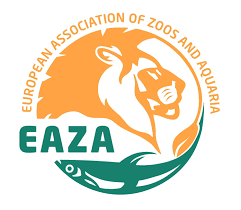In the face of numerous challenges in the wild, the Bearded Vulture requires dedicated conservation efforts. At the forefront of this mission is the Bearded Vulture Captive Breeding Network, a collaborative initiative coordinated by the Vulture Conservation Foundation (VCF) on behalf of the European Association of Zoos and Aquariums (EAZA) European Endangered Species Programme – Ex situ Programme (EEP). This network exemplifies a collective commitment to addressing the species’ challenges while consistently seeking innovative solutions.
In the comprehensive framework of this programme, artificial incubation and chick rearing in captivity play pivotal roles. These techniques not only enhance breeding outcomes but also serve as essential tools for rearing birds that are suitable for release into the wild.
The Bearded Vulture EEP has recently published detailed guidelines for artificial incubation and chick rearing to maximize results, offering valuable insights into the essential steps required.
Captive breeding for conservation
The Bearded Vulture EEP unites zoos, breeding centres, and private partners dedicated to preserving the Bearded Vulture. Since its inception in 1978, the programme has successfully reared 673 juvenile Bearded Vultures. These offspring are crucial for reintroduction and reinforcement projects across Europe, from the Alps to Andalucía, Grands Causses, Corsica, and Maestrazgo-Els Ports. The overarching goal of the Bearded Vulture EEP is to establish a European metapopulation, promoting gene flow between isolated populations in Europe, North Africa, and Asia.

Understanding clutch dynamics and cainism
Between 1978 and 2023, the Bearded Vulture EEP recorded 1161 clutches, with 54.4%-57.5% being double clutches. However, the success of these clutches is threatened by aggressive behaviour known as “cainism” observed in Bearded Vulture chicks while in the nest, resulting in the death of the younger sibling. First described by Heinroth in 1927, cainism was attributed to behaviours observed in wild kites and buzzards.
In-depth observations at Innsbruck Alpenzoo revealed that cainism is an inborn (“obligatory”) behaviour, independent of chick satiation levels and more pronounced 5-20 days after hatching. The older chick’s aggressive actions, including pecking and holding onto everything, lead to the death of the younger sibling. Thaler & Pechlaner’s research in 1979 and 1980 provided crucial insights into this behaviour, necessitating artificial incubation and rearing to prevent cainism.
Mitigating challenges with artificial Incubation
Recognizing the negative impact of cainism on chick survival, the EEP turned to artificial incubation and rearing as a preventive measure. This involves removing the second egg in double clutches and later returning the chicks to their parents or foster pairs, preventing cainism and human imprinting, where birds would recognize humans as their species.
The refinement of artificial incubation techniques played a pivotal role in the programme’s success. Surprisingly, daily variations in non-incubation time and interruption duration did not impact breeding success, challenging prior assumptions. Thermal shock experiments, exposing eggs to controlled cooling, highlighted the significance of external factors in incubation success.
The comprehensive artificial incubation process involves meticulous steps such as weighing, candling, assessing eggs, mimicking natural incubation parameters, controlled thermal shock, and facilitating a careful hatching process to improve success rates.
Varied measures for different chick rearing scenarios

Chick rearing post-hatching focuses on health, feeding, and continuous monitoring. Health monitoring includes temperature regulation, fluid management, and careful brooding techniques. Antibiotic treatment may be necessary, and feeding protocols emphasize timing, frequency, and continued care for the chicks.
Given the challenges posed by cainism, various chick-rearing techniques are employed to ensure a natural rearing and minimize aggression between siblings. Introducing additional chicks to nests demands careful planning, gradual introductions, feeding strategies, temperature considerations, and ongoing monitoring.
The conservation of Bearded Vultures relies on scientific insights, meticulous protocols, and dedicated conservationists implementing and refining crucial techniques for the species’ survival. The recently published technical guidelines extend beyond double clutches, addressing various scenarios requiring artificial incubation and chick rearing. Whether dealing with physical disabilities, incubation challenges, behavioural problems, or external disturbances causing incubation interruptions, the guidelines provide a comprehensive framework for effective intervention.






